M8 Greyhound
The M8 Light Armored Car is a 6×6 armored car produced by the Ford Motor Company during World War II. It was used from 1943 by the United States and British troops in Europe and the Far East until the end of the war.[1] The vehicle was widely exported and as of 2006 still remained in service with some countries.[1]
| M8 Light Armored Car | |
|---|---|
A preserved M8 on display (2008) | |
| Type | Armored car |
| Place of origin | United States |
| Service history | |
| In service | 1943–present |
| Used by | See List of operators |
| Wars | World War II Chinese Civil War Korean War Greek Civil War First Indochina War Cuban Revolution Congo Crisis Vietnam War Cambodian Civil War Laotian Civil War Guatemalan Civil War Colombian conflict Internal conflict in Peru |
| Production history | |
| Designer | Ford Motor Company |
| Designed | 1942 |
| Manufacturer | Ford Motor Company |
| Produced | March 1943 – June 1945[1] |
| No. built | 8,523 M8[1][2] 3,791 M20[1][2] |
| Variants | See Variants |
| Specifications | |
| Mass | 17,400 lb (7.89 metric tons) [2] |
| Length | 16 ft 5 in (5.0 m)[2] |
| Width | 8 ft 4 in (2.54 m)[2] |
| Height | 7 ft 4 1⁄2 in (2.25 m)[2] |
| Crew | 4 (commander/loader, gunner, driver, assistant driver) [2] |
| Armor | 0.375–1 in (9.5–25.4 mm) [2] |
Main armament | 1× 37 mm gun M6 80 rounds[2] |
Secondary armament | 1× .30 caliber (7.62 mm) Browning M1919 machine gun 1,500 rounds[2] 1× .50 caliber (12.7 mm) Browning M2HB machine gun 400 rounds[2] |
| Engine | Hercules JXD 6 cylinder 4-cycle inline gasoline engine[2] 110 hp (82 kW) at 3,200 rpm[2] |
| Power/weight | 13.94 hp/metric ton |
| Transmission | Synchromesh 4 speeds forward, 1 reverse[2] |
| Suspension | Leaf spring |
| Ground clearance | 11 1⁄2 in (0.29 m) |
| Fuel capacity | 56 US gallons (210 litres)[2] |
Operational range | ~350 miles (560 km) on road[2] |
| Maximum speed | 55 mph (89 km/h) on road[2] |
Steering system | Steering wheel[2] |
In British service, the M8 was known as the "Greyhound", a nickname seldom if ever used by the US. The British Army found it too lightly armored, particularly the hull floor, which anti-tank mines could easily penetrate (the crews' solution was lining the floor of the crew compartment with sandbags). Nevertheless, it was produced in large numbers. The M8 Greyhound's excellent on-road mobility made it a great supportive element in the advancing American and British armored columns. It was marginal off-road, especially in mud.
Development and production history
In July 1941, the U.S. Army Ordnance Department initiated the development of a new fast tank destroyer to replace the M6 37 mm gun motor carriage, which was essentially a ¾-ton truck with a 37 mm gun installed in the rear bed.[1] The requirement was for a 6×4 wheeled vehicle armed with a 37 mm gun, a coaxial machine gun mounted in a turret, and a machine gun in the front hull.[1] Its glacis armor was supposed to withstand fire from a .50 in (12.7 mm) machine gun and side armor from a .30 in (7.62 mm) machine gun. Prototypes were submitted by Studebaker (designated T21), Ford (T22) and Chrysler (T23), all of them quite similar in design and appearance.
In April 1942, the T22 was selected, despite complaints about deficiencies, due to the need for vehicles. By then, it was clear that the 37 mm gun would not be effective against the front armor of German tanks; so, the new armored car, now designated the M8, took on a reconnaissance role instead.[1] Contract issues and minor design improvements delayed serial production until March 1943. Production ended in June 1945.[1] A total of 8,523 M8 and 3,791 M20 armored cars were built,[2] The M8 and M20 were manufactured at Ford Motor Company plants in Chicago, Illinois and Saint Paul, Minnesota; the St. Paul plant built 6,397 M8s to Chicago's 2,126; the 3,791 M20s were produced at the Chicago plant only.
In May 1942, having viewed the prototype, the British Tank Mission turned down the offer to acquire the M8 through Lend-Lease.[1] It was named "Greyhound" in keeping with other U.S. armored cars already ordered by the British, such as the (cancelled) T18 Boarhound, the T17 Deerhound, the T17E1 Staghound and the (also cancelled) M38 Wolfhound.
| Month | M8 | M20 |
|---|---|---|
| March 1943 | 15 | |
| April 1943 | 31 | |
| May 1943 | 110 | |
| June 1943 | 169 | |
| July 1943 | 512 | 126 |
| August 1943 | 314 | 205 |
| September 1943 | 803 | 275 |
| October 1943 | 545 | 293 |
| November 1943 | 1,000 | 400 |
| December 1943 | 800 | 325 |
| January 1944 | 562 | 214 |
| February 1944 | 468 | 193 |
| March 1944 | 241 | 53 |
| April 1944 | 223 | 48 |
| May 1944 | 241 | 53 |
| June 1944 | 234 | 32 |
| July 1944 | 256 | 29 |
| August 1944 | 243 | 83 |
| September 1944 | 232 | 158 |
| October 1944 | 234 | 160 |
| November 1944 | 234 | 159 |
| December 1944 | 215 | 155 |
| January 1945 | 232 | 97 |
| February 1945 | 144 | 153 |
| March 1945 | 162 | 163 |
| April 1945 | 150 | 150 |
| May 1945 | 153 | 156 |
| June 1945 | 111 | |
| Total | 8,523 | 3,791 |
Mission and operational performance
The cavalry reconnaissance troops (equivalent to companies and assigned to infantry divisions) and squadrons (equivalent to battalions and assigned to armored divisions or independent and used at the direction of a division or corps commander) used by the US Army served as advance "eyes and ears." This mission demanded an emphasis on speed and agility, rather than firepower and armor. When on the march, the cavalry's mission was to make contact with enemy forces at the earliest practical moment and maintain it thereafter. In this role, the recon troops identified hostile units and reported their strength, composition, disposition and movement. During withdrawals, the cavalry often served as a screening force for the main units.
The M8 performed this function with distinction. Each M8 armored car was equipped with a long-range radio set to assist in the exercise of command, or for the purpose of relaying information received from subordinate elements to higher headquarters. Another short-range radio set served to communicate within a cavalry reconnaissance platoon, reconnaissance team, or with headquarters. The M8 weighed 17,400 lb (7,900 kg) fully loaded with equipment and crew, and was capable of cruising 100–200 mi (160–320 km) cross country or 200–400 mi (320–640 km) on highways without refueling. On normal roads, it was capable of a sustained speed of 55 mph (89 km/h), hence its nickname.
The M8 was not designed for offensive combat, and its firepower was adequate only against similar lightly armored enemy vehicles and infantry. The vehicle's armor provided a fair degree of protection against small-arms fire but nothing more. With a meager .25 in (6 mm) of floor armor, the M8 was particularly vulnerable to German mines.
The vehicle's other drawback was limited mobility in heavily wooded areas and on broken terrain; armored cavalry units preferred using the ¼-ton reconnaissance car (Jeep) in these environments. A large turning radius, limited wheel travel, and open differentials limited its cross-country mobility and made the M8 susceptible to immobilization off-road in off-camber terrain and defiles. This led operators to using the vehicle mostly on existing roads and paths, where it became vulnerable to ambush. The use of wheels, rather than continuous tracks like a tank, gave it a higher ground pressure which hampered its off-road performance in soft or loose terrain such as mud and snow. Conversely, the performance of the M8 on hard surfaces was exceptional, with the vehicle having a long range and able to consistently maintain its top speed of 55 mph. Also, as a wheeled vehicle, the M8 was generally more reliable than tracked vehicles of similar size, requiring far less maintenance and logistics support.
Description
The M8's armor was thin, but it provided protection for the crew from small-arms fire and shrapnel, enough so that the vehicle could carry out its main mission of reconnaissance. The frontal, sloped hull armor varied in thickness from 0.5 inches to 0.75 inches (15.8 to 19 mm) The side and rear hull armor, also sloped but slightly less so than the front, was 0.375 inches (9.5 mm) thick. The top armor was 0.25 inches (6.4 mm) thick, as was the floor. The turret was comparatively better protected than the hull, being 0.75 inches (19 mm) thick all around, with an 0.25-inch (6.4 mm) partial roof. The cast, rounded gun shield was uniformly 1 inch (25.4 mm) thick.[3]
The M8 was fitted with a 37 mm M6 gun (aimed by an M70D telescopic sight) and a coaxially mounted .30 in (7.62 mm) Browning machine gun in a one-piece, cast mantlet, mounted in an open-topped, welded turret. The M8 was initially fitted without any kind of anti-aircraft defense; as a stopgap solution, a .50 caliber Browning M2HB machine gun on a ring mount was retrofitted to nearly all vehicles already in service. A purposefully-designed pintle was mounted on all late-production vehicles, but it saw comparatively little action due to a troubled development process.
The crew of four comprised a commander (who doubled as the loader), gunner, driver, and radio operator (who could also act as a driver). The driver and radio operator were seated in the forward section of the hull, while the commander and gunner sat in the turret, with the commander seated on the right, and the gunner on the left,
The vehicle carried 80 37 mm rounds (16 in the turret and 64 in an ammunition rack in the right sponson) when fitted with a single radio. Vehicles with a second radio installed only carried 16 main gun rounds. Some units solved this problem by cutting up the removed main ammunition rack and stowing 18 rounds in each sponson, under the radios. This raised the number of main gun rounds able to be carried to 52. Another modification (the most common one) involved fabricating (again from the discarded main ammunition rack) a 43-round bin to be placed behind the driver's seat, and a 20-round bin attached to the framing of the turret basket. This raised the ammunition capacity up to 79 rounds.[1] Machine gun ammunition consisted of 1,500 .30 caliber rounds and 400 .50 caliber rounds. In addition, the vehicle carried a mix of 16 smoke and hand grenades, four smoke pots, six M1 anti-tank mines and four M1 carbines for the crew.
The M8 was powered by a Hercules Model JXD in-line six-cylinder 320 in³ gasoline engine giving it a top speed of 55 mph (88 km/h) on-road, and 30 mph (48 km/h) off-road. With a 59 U.S. gallon (210 litre) fuel tank and an average fuel consumption of 7.5 mpg, it could manage an average road range of 200–400 miles (320–640 km) The Hercules JXD ran more quietly than other engines of comparable power, which helped the M8 maintain an element of surprise and reduce the chance of being heard by the enemy. Because of this, the M8 armored cars in Patton's Third Army were known as "Patton's ghosts", since they were almost never detected by the Germans until it was too late.
Service history
World War II
The M8 light armored car, the "Greyhound", entered combat service with the Allies in 1943. It was purpose designed to serve as the primary basic command and communication combat vehicle of the U.S. Cavalry Reconnaissance Troops.
The M8 first saw action in Sicily in 1943 and was subsequently used by the U.S. Army in Italy, Europe, and the Pacific. In the latter theater, it was used mostly on Okinawa and the Philippines, and was even employed in its original tank destroyer role as most Japanese tanks had armor that was vulnerable to its 37 mm gun.
Over 1,000 were supplied via lend-lease channels to US allies; United Kingdom, Free France and Brazil.
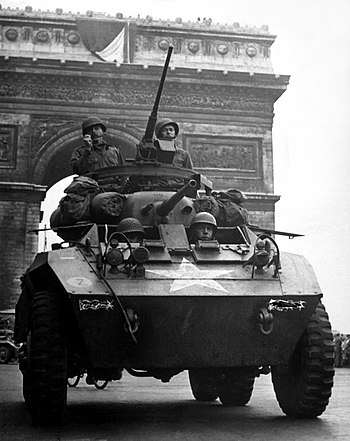
The vehicle was considered fast, sufficiently reliable (after some technical problems were solved) and armed and armored well enough for reconnaissance missions. However, cavalry units criticized its off-road performance, which was even worse than the M3A1 scout car it replaced. In the mountainous terrain of Italy and in the deep mud and snow of North European winter, the M8 was more or less restricted to roads, which greatly reduced its value as a reconnaissance vehicle. It was also very vulnerable to landmines. An add-on armor kit was designed to provide an extra quarter-inch of belly armor to reduce landmine vulnerability. Some crews placed sandbags on the floor to make up for the thin belly armor.
Another problem was that commanders often used their reconnaissance squadrons for fire support missions, for which the thinly-armored M8 was ill-suited. When it encountered German armored reconnaissance units, the M8 could easily penetrate their armor with its 37 mm gun. Conversely, its own thin armor was vulnerable to the 20 mm autocannons that German scout cars were equipped with.
There is a story that during the Battle of St. Vith in the Battle of the Bulge, an M8 of Troop B, 87th Cavalry Reconnaissance Squadron was able to destroy a German King Tiger heavy tank after getting in behind one on the Schonberg Road. According to the story, the commander tried to traverse his turret to engage the M8. The M8 fired three 37 mm rounds through the 80 mm thick rear armor of the Tiger from only 25 yd (23 m), setting it on fire. According to Antony Beevor: "There was a muffled explosion, followed by flames which billowed out of the turret and engine port."[4][5] On the face of it, this story seems unlikely, as a 37mm M6 gun could only penetrate 61mm of armour, much less than the 80mm-thick rear armour of a Tiger tank.[6] However, it was reported as fact by the US Army, on the authority of a Major Donald P. Boyer, Jr., who claimed to have witnessed the engagement.[7]
Due to mobility problems with the M8, namely with regards to its suspension, the US Army's Special Armored Vehicle Board recommended the development of a new six-wheeled armored car which matched the M8's dimensions and size but was equipped with articulated, independently sprung suspension system.[8] Two prototypes, the Studebaker T27 and Chevrolet T28 were trialled by the US and also reviewed by the British Armed Forces.[8] The new armored car program was shelved and then permanently cancelled due to the end of the war, as impetus and funding for new military development projects had plummeted.[8] The fleet of preexisting M8 and M20 armored cars was then considered more than adequate for the postwar US Army, which was demobilizing thousands of personnel and already had large stockpiles of equipment surplus to its requirements.[8]
Post-war

After the war, many of the US Army's M8 and M20 armored cars were marked off as surplus and donated or sold to various countries, especially under the Foreign Military Assistance Program (MAP).[1] Most of the remaining vehicles remained in service with the United States Constabulary in various Western European nations.[1] M8s were also used by American occupation forces in Korea, which later donated them to the fledgling Republic of Korea Army's first armored cavalry regiment.[1]
Most M8s and M20s remaining in US service had been allocated to one of five reorganized armored cavalry regiments by the early 1950s.[1] The others were utilized by the Military Police Corps, which deployed them during the Korean War for guarding static installations and escorting prisoners.[8] A small number of M20s were modified by US or South Korean forces as assault vehicles equipped with ring-mounted flamethrowers during that conflict.[8] All the US Army M8s and M20s were retired from active duty due to age and increasing obsolescence shortly after the Korean War. The majority of decommissioned vehicles were then shipped abroad as aid to various armies, especially the French Far East Expeditionary Corps, save for a small number which were retained by Army National Guard units.[1] When the Army National Guard retired its own armored cars a few years later, an undisclosed number were purchased by domestic police departments and modified for riot control purposes.[1]
France was the largest postwar operator of the M8/M20 series after the United States, having received hundreds of the vehicles as American aid between 1945 and 1954.[1] During the First Indochina War, many second-hand examples were shipped directly from the US to French Indochina, where they were deployed for rural patrols and road reconnaissance.[1] These remained in service in Indochina until the end of the war, when they were donated to the Army of the Republic of Vietnam (ARVN).[8] The French Foreign Legion also utilized the M8 during the Algerian War, where it was superseded first by the Panhard EBR and subsequently by the Panhard AML in counter-insurgency operations.[9] The EBR was accepted as a generic replacement for all remaining M8s by the French military in 1956.[10] Between 1956 and 1964 the remaining M8s and M20s were donated to the Mobile Gendarmerie, as well as the armies of several former French colonies.[1]
ARVN M8s and M20s saw considerable action during the Vietnam War; however, by 1962 the US noted the attrition rate of the fleet was becoming high due to age.[8] This resulted in a proposal to fund the design and production of a new purpose built armored car for the South Vietnamese government: the Cadillac Gage Commando. The Commando series began to replace the M8 and M20 in ARVN service from the mid-1960s onward.[8] A small number of the older armored cars were still held by the ARVN reserves as late as 1975; these were inherited by the People's Army of Vietnam after the war.[11]
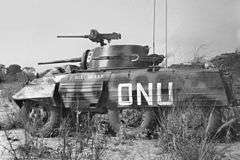
Another country which received a substantial number of ex-American M8s following the war was Belgium, which presumably received them as part of a NATO military assistance program.[1] These M8s were adopted primarily by the Belgian Air Component, which issued them to base security units, and the Force Publique in the Belgian Congo.[1] Following Congolese independence several of the Force Publique M8s fell into the hands of Katangese separatists, while others were repurposed for peacekeeping operations by the United Nations Operation in the Congo (ONUC).[12]
The continued proliferation of M8s and M20s during the late 1960s and 1970s resulted in American and French defense contractors offering several commercial upgrade kits to extend their service life. At least ten countries, Cameroon, Cyprus, Ethiopia, El Salvador, Guatemala, Haiti, Jamaica, Morocco, Venezuela, and Zaire, modernized their M8/M20 fleets with diesel engines and new transmissions during this time.[1] The National Army of Colombia also invested heavily in upgrading the M8's turret armament, having it replaced by a single .50 caliber machine gun and a launcher for BGM-71 TOW anti-tank missiles.[8] In the late 1960s Brazil developed an upgraded M8 with an articulated suspension, new gearbox, and new engine built with parts that could be sourced locally.[13][14][15] This project spawned a series of indigenous prototypes, including a bizarre four-wheeled variant of the M8 chassis known as the VBB, and another more conventional six-wheeled design known as the VBR-2. The latter subsequently evolved into the first Brazilian manufactured armored car, the EE-9 Cascavel.[13][14][15]
List of operators
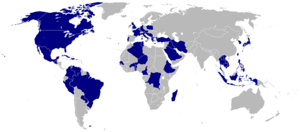

Current operators
Former operators


.svg.png)
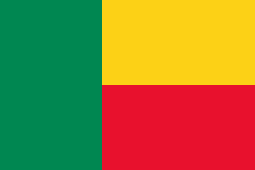




.svg.png)
.svg.png)





.svg.png)




.svg.png)


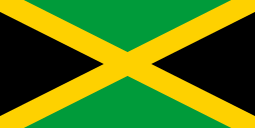

.svg.png)














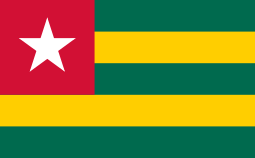







.svg.png)
Variants
- T22 light armored car
- prototype
- T22E1 light armored car
- a 4×4 prototype
- T22E2 light armored car
- prototype eventually standardized as M8
- M8 light armored car
- production variant
- M8E1
- light armored car: a variant with modified suspension. Two vehicles were produced in 1943.
- M20 armored utility car
- also known as the M20 scout car, was a Greyhound with the turret replaced with a low, armored open-topped superstructure and an anti-aircraft ring mount for a .50 cal M2 heavy machine gun. A bazooka was provided for the crew to compensate for its lack of anti-armor weaponry. The M20 was primarily used as a command vehicle and for forward reconnaissance, but many vehicles also served as armored personnel carriers and cargo carriers. It offered high speed and excellent mobility, along with a degree of protection against small arms fire and shrapnel. When employed in the command and control role, the M20 was fitted with additional radio equipment. Originally designated the M10 armored utility car, it was redesignated M20 to avoid confusion with the M10 tank destroyer. A total of 3,680 M20s were built by Ford during its two years in production (1943–1944).
- T69 multiple gun motor carriage
- in late 1943, an anti-aircraft variant of the M8 was tested. The vehicle was armed with four .50-inch machine guns in a turret developed by Maxson Corp. The antiaircraft board felt that the vehicle was inferior to the M16 MGMC and the project was closed.
- M8 TOW tank destroyer
- M8 upgraded by the US company Napco. The main gun was replaced by a .50-inch machine gun and a BGM-71 TOW launcher was installed above the turret. Upgraded vehicles were used by Colombia.
- M8/M20 H-90
- a French upgrade for the M20 showcased by GIAT Industries in 1971, which mounted a 90 mm low-velocity gun adopted from the Panhard AML family of reconnaissance vehicles.
- CRR Brasileiro
- a version developed in 1968 by the Brazilian Army Engineering Institute (IME). The middle axle was removed and a new engine (120 hp (89 kW) Mercedes-Benz OM-321) installed to create the VBB-1 of which one prototype was completed, the vehicle being found to be inferior. The Vbb-1 was, in turn, the basis for the CRR which reverted to a 6×6 configuration and eight vehicles were produced for evaluation. The EE-9 Cascavel was developed from the CRR.
- M8 (diesel)
- Hellenic Army armored car: a number of M8 armored cars were upgraded with a Steyr diesel engine in place of the Hercules JXD gasoline engine, this required a rearwards extension of the engine compartment by 11.8 in (300 mm), as well as some heightening. Also fitted were a new radio, indicator and new hooded lights, rear view mirrors, while the M2HB anti-aircraft machinegun was moved to the right front of the turret, where a new pintle socket was bolted on the partial roof (the turret rear socket being retained) and the coaxial 0.30-inch M1919A4 replaced by a 7.62×51mm NATO MG3 machinegun. Used for coastal defense and retired from service in the late 1990s.
- Colombian AM8
- a Colombian fusion of turret-mounted World War II anti-air artillery in an M8 with a modern motor. It is a counter-insurgency weapon for use against guerrilla ambushes in the Colombian mountains.
 T22
T22- M20 armored utility car at the US Army Ordnance Museum.
 T69 multiple gun motor carriage
T69 multiple gun motor carriage
See also
- List of U.S. military vehicles by model number
- List of U.S. military vehicles by supply catalog designation
- The Ontario Regiment Museum has an operating M8 Greyhound.
Notes
- Notes
- Citations
- Zaloga, Steve (2002). M8 Greyhound Light Armored Car. Osprey. ISBN 1-84176-468-X.
- Livesey, Jack (2007). Armoured Fighting Vehicles of World Wars I and II. Southwater. p. 71. ISBN 978-1-84476-370-2.
- "Light Armored Car M8 Greyhound".
- Beevor, Antony (2015). Ardennes 1944: Hitler’s last gamble. New York: Viking. p. 172. ISBN 978-0-670-91864-5.
- U. S. Army Armor School Staff (1998), The Battle at St. Vith, Belgium, 17–23 December 1944: An Historical Example of Armor in the Defense, Merriam Press, pp. 31–32, ISBN 978-1-57638-145-8
- Hunnicutt, R. P. (1988). Firepower: A History of the American Heavy Tank. Presidio Press. ISBN 0-89141-304-9
- https://apps.dtic.mil/dtic/tr/fulltext/u2/a952910.pdf
- Hunnicutt, Richard Pearce (2002). Armored Car: A History of American Wheeled Combat Vehicles. Navato, California: Presidio Press. pp. 138–181. ISBN 978-0891417774.
- "L'AUTOMITRAILLEUSE LEGERE PANHARD". Retrieved 15 November 2014.
- David Jordan. The History of the French Foreign Legion: From 1831 to Present Day (2005 ed.). Amber Books Ltd. pp. 177–185. ISBN 1-59228-768-9.
- Christopher F. Foss. Jane's World Armoured Fighting Vehicles (1976 ed.). Macdonald and Jane's Publishers Ltd. p. 187. ISBN 0-354-01022-0.
- Tom, Cooper (2 September 2003). "Congo, Part 1; 1960-1963". Air Combat Information Group. Retrieved 9 August 2013.
- Neto, Raul de Gouvea (1991). "How Brazil Competes In The Global Defense Industry" (PDF). Latin American Research Review. 26 (3): 83–108. Archived from the original (PDF) on 8 December 2014.
- Bastos, Expedito Carlos Stephani (June 2006). "Uma realidade brasileira - As exportações dos veículos militares Engesa". Revista DaCultura. 6 (10): 36–41.
- Bastos, Expedito Carlos Stephani (December 2004). "Uma realidade brasileira - Desenvolvimento de blindados sobre roadas 1967–1975". Revista DaCultura. 4 (7): 36–45.
- "Trade Registers". Armstrade.sipri.org. Retrieved 20 June 2013.
- English, Adrian (1984). Armed forces of Latin America: their histories, development, present strength, and military potential. London: Jane's Information Group. pp. 174, 261, 310. ISBN 978-0710603210.
- M8 Greyhound milik Polisi (Museum exhibit), South Jakarta, Indonesia: Satriamandala Museum, 2014
- Kočevar, Iztok (August 2014). "Micmac à tire-larigot chez Tito: L'arme blindée yougoslave durant la Guerre froide" [The Yugoslav armored arm during the Cold War]. Batailles et Blindés (in French). No. 62. Caraktère. pp. 66–79. ISSN 1765-0828.
References
- TM 9-2800
- TM 9-743 Armored Car M8, 1943
- Steven J. Zaloga and Tony Bryan, M8 Greyhound Light Armored Car 1941–91, New Vanguard series 53, Osprey Publishing Ltd, Oxford 2002. ISBN 1-84176-468-X.
External links
| Wikimedia Commons has media related to M8 Greyhound. |
- from wwiivehicles.com
- RobertsArmory
- Photo gallery at Tanxheaven
- Armor penetration table of US 37 mm guns
- CRR Brasileiro at Warwheels.net
- FM2-6 Field Manual, World War 2, US Army
- M8 Armored Car at U.S. Veterans Memorial Museum]
- Armored Mercedes S500 {{|date=September 2019}}